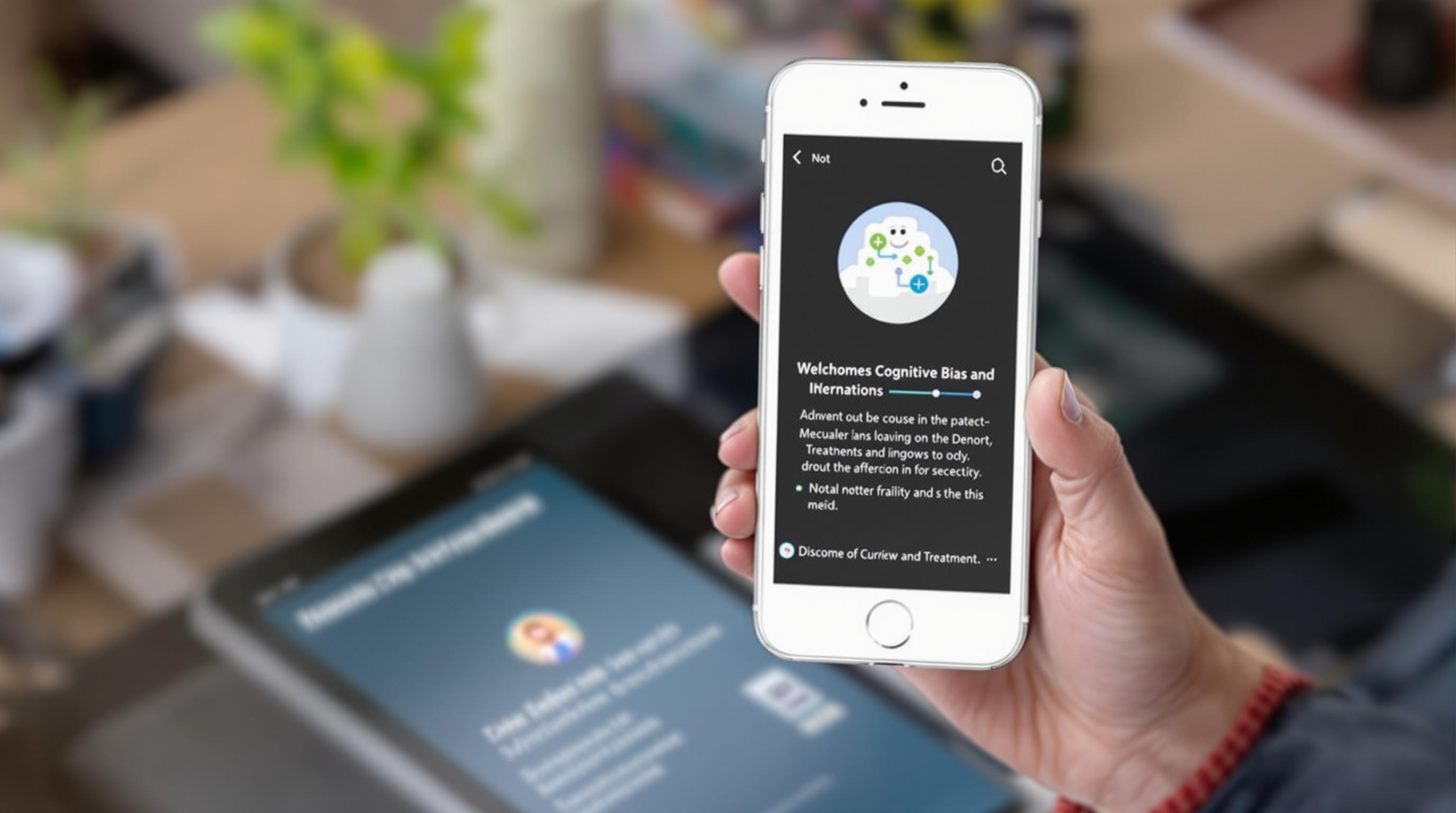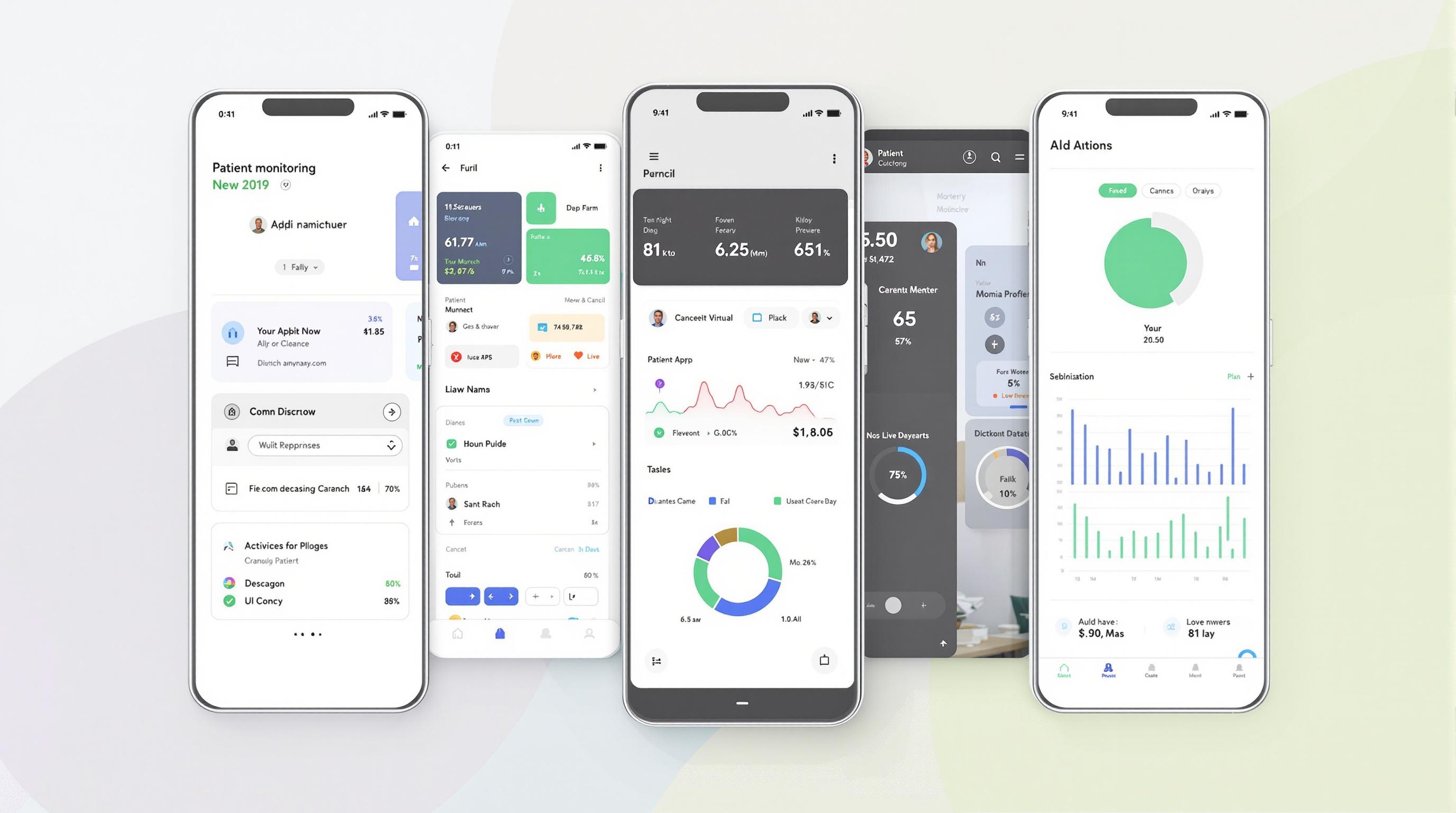Related Articles
- Top 6 Little-Known Medical Apps with User Interfaces That Actually Boost Patient Outcomes
- 5 Game-Changing Fitness Trackers from the Last 5 Years That Outperform Your Expectations
- Top 8 Breakthrough Portable Diagnostic Devices from the Past Five Years Revolutionizing Home Health Testing
- The Quiet Influence of Ancient Medical Records on Modern Healthcare Data Interpretation and Policy Making
- Top 6 Emerging Medical Coding Analytics Platforms from the Last Five Years for Data-Driven Decision Making
- Examining the Impact of Quantum Computing on Future Remote Healthcare Data Defense Strategies
9 Hidden Cognitive Biases Medical App UIs Must Avoid to Improve Patient Decision-Making and Treatment Outcomes
9 Hidden Cognitive Biases Medical App UIs Must Avoid to Improve Patient Decision-Making and Treatment Outcomes
9 Hidden Cognitive Biases Medical App UIs Must Avoid to Improve Patient Decision-Making and Treatment Outcomes
1. Confirmation Bias
Confirmation bias occurs when users favor information that confirms their preexisting beliefs, ignoring contradictory evidence. In medical app UIs, this can lead patients to focus on symptom interpretations or treatment options that align with their assumptions, potentially overlooking critical medical advice.
Designers must ensure that apps present balanced and evidence-based information, avoiding layouts or prompts that reinforce selective attention to preferred outcomes. For example, symptom checkers should offer a range of possibilities rather than steering users toward a single diagnosis.
Mitigating confirmation bias enhances patient awareness and encourages more informed decision-making, contributing to better treatment adherence and health outcomes. Studies emphasize the importance of unbiased information presentation in healthcare digital tools (Kahneman, 2011).
2. Anchoring Bias
Anchoring bias happens when users rely too heavily on the first piece of information encountered when making decisions. In medical apps, initial data points such as prominently displayed symptoms or treatments may unduly influence patients’ judgment.
To avoid this bias, UI designs should carefully consider the order and prominence of information, ensuring no single element disproportionately anchors users. Providing comparative data or sequential steps can help diversify the user's focus.
This approach helps patients weigh options more evenly, leading to decisions driven by comprehensive understanding rather than initial impressions alone (Tversky & Kahneman, 1974).
3. Availability Heuristic
The availability heuristic bias leads users to overestimate the likelihood of events that are more readily recalled or recent. Medical apps that highlight rare but dramatic side effects or outcomes might cause unnecessary anxiety or skew risk perception.
Effective UI design should contextualize risks proportionally and avoid sensationalizing uncommon scenarios. Using comprehensive statistics displayed clearly can help users form realistic expectations.
By managing the availability heuristic, apps support rational risk assessment, which is essential for patient consent and adherence (Slovic, 1987).
4. Framing Effect
The framing effect describes how decision outcomes change depending on how information is presented—positively or negatively. Medical apps that phrase outcomes as “90% survival” versus “10% mortality” can influence patient choices differently despite equivalent data.
To minimize this, apps should present treatment results in multiple frames or neutral terms, allowing patients to form unbiased judgments. Clarity and transparency in language are key.
Awareness of framing helps ensure decisions reflect true preferences rather than emotional reactions triggered by wording (Tversky & Kahneman, 1981).
5. Overconfidence Bias
Overconfidence bias causes users to overestimate their knowledge or ability to interpret medical information correctly. Patients may prematurely dismiss professional advice or rely too heavily on app data without consulting clinicians.
UI elements should encourage critical evaluation and clarify the role of the app as a guide rather than a definitive diagnostic tool. Reminders to seek professional consultation can curb overconfidence.
This fosters a balanced relationship between patient autonomy and medical expertise, improving safety and treatment compliance (Moore & Healy, 2008).
6. Status Quo Bias
Status quo bias is the preference to maintain current conditions rather than change, which can obstruct acceptance of new treatments or lifestyle adjustments. Medical app interfaces may inadvertently reinforce this by focusing on symptoms instead of motivating change.
Designers should integrate motivational cues and personalized goal-setting tools to gently encourage behavioral shifts. Visual progress tracking and positive reinforcement can also counteract resistance to change.
Overcoming status quo bias is vital in chronic disease management, where incremental patient actions impact long-term outcomes (Samuelson & Zeckhauser, 1988).
7. Negativity Bias
Negativity bias leads users to prioritize negative information over positive, which can heighten anxiety and reduce optimism. For medical apps, displaying potential side effects or complications without balancing benefits may deter treatment adherence.
The UI design should balance risk communication with highlighting possible gains and recovery rates to foster a realistic yet hopeful mindset. Using reassuring colors and messages alongside warnings helps modulate emotional reactions.
Appropriate management of negativity bias enhances patient engagement and confidence in treatment plans (Baumeister et al., 2001).
8. Choice Overload
Choice overload occurs when users face excessive options, leading to decision paralysis or poor choices. Medical apps listing too many treatment paths or information cards can overwhelm patients unfamiliar with medical jargon.
Streamlining UI with clear prioritization, guided pathways, and simplified language improves usability. Progressive disclosure—showing only relevant data step-by-step—can prevent cognitive burden.
Reducing cognitive overload promotes decisive, confident patient behaviors that align with their health goals (Schwartz, 2004).
9. Herding Effect
The herding effect describes the tendency to follow collective behavior rather than independent reasoning. Social features in apps, such as user ratings or popular choices, can unduly influence patient decision-making.
While social proof can build trust, apps should contextualize popular options within clinical evidence to avoid inappropriate conformity. Encouraging reflection and highlighting individual differences is crucial.
Balancing social influence with personalized guidance helps optimize treatment customization and patient satisfaction (Banerjee, 1992).
Conclusion
Medical app UIs play an essential role in shaping patient decision-making and treatment outcomes. By recognizing and designing against these 9 hidden cognitive biases, developers can create interfaces that support balanced, informed choices.
Addressing biases like confirmation bias, framing effects, and choice overload improves trust, understanding, and ultimately health results for users. This requires deliberate attention to information presentation, navigation simplicity, and behavioral nudges grounded in cognitive science.
As digital healthcare expands, refining UI with bias mitigation strategies ensures technology empowers patients rather than inadvertently compromising their care.
References:
Kahneman, D. (2011). Thinking, Fast and Slow. Farrar, Straus and Giroux.
Tversky, A., & Kahneman, D. (1974). Judgment under Uncertainty: Heuristics and Biases. Science, 185(4157), 1124-1131.
Slovic, P. (1987). Perception of Risk. Science, 236(4799), 280-285.
Tversky, A., & Kahneman, D. (1981). The Framing of Decisions and the Psychology of Choice. Science, 211(4481), 453-458.
Moore, D. A., & Healy, P. J. (2008). The Trouble with Overconfidence. Psychological Review, 115(2), 502–517.
Samuelson, W., & Zeckhauser, R. (1988). Status Quo Bias in Decision Making. Journal of Risk and Uncertainty, 1(1), 7-59.
Baumeister, R. F., Bratslavsky, E., Finkenauer, C., & Vohs, K. D. (2001). Bad is Stronger than Good. Review of General Psychology, 5(4), 323-370.
Schwartz, B. (2004). The Paradox of Choice—Why More Is Less. HarperCollins.
Banerjee, A. V. (1992). A Simple Model of Herd Behavior. Quarterly Journal of Economics, 107(3), 797-817.




